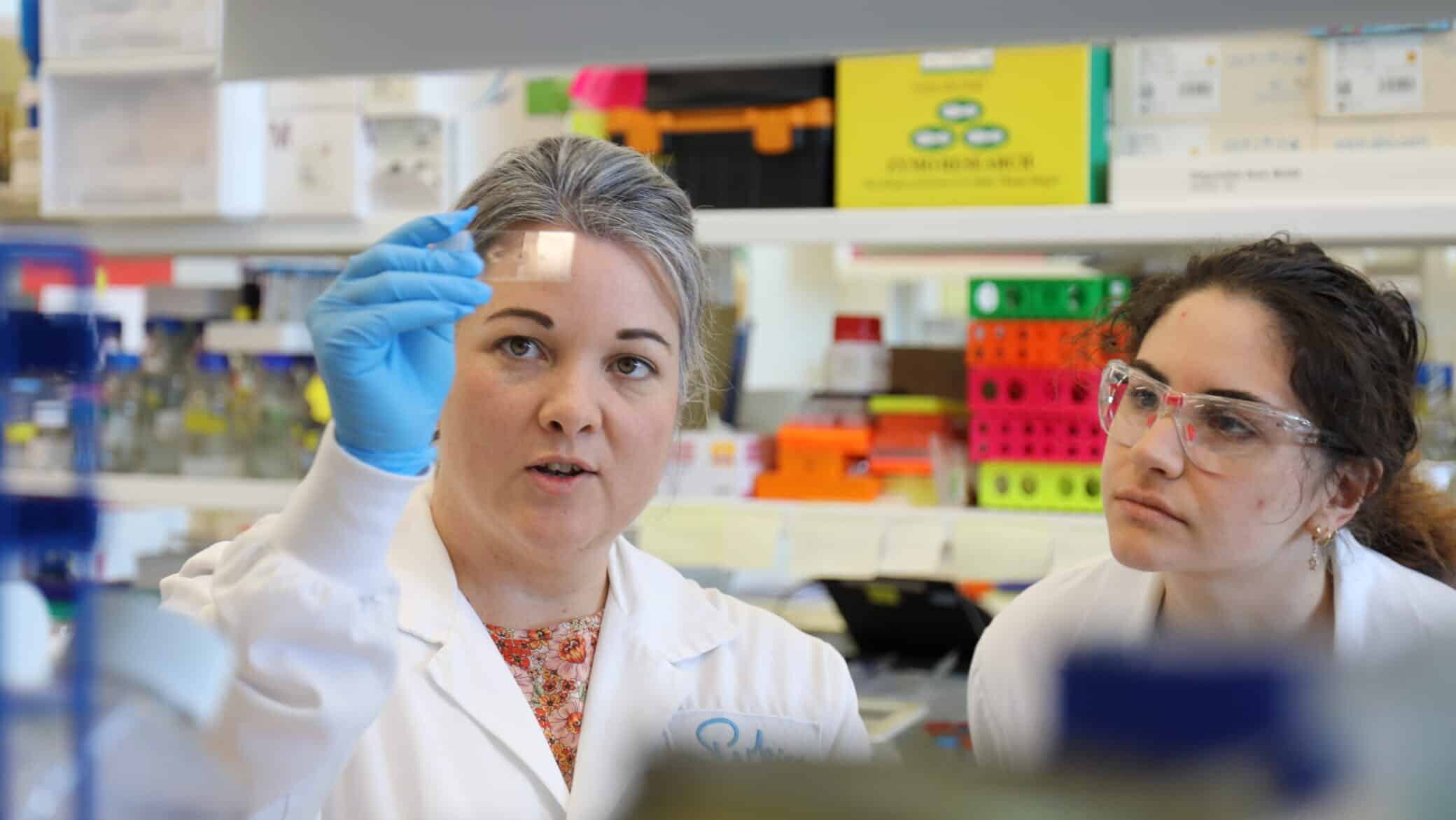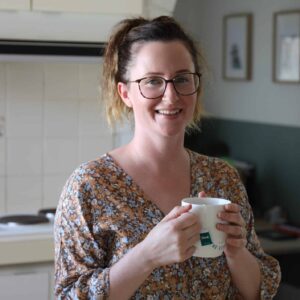
National approach to finding the causes of several debilitating diseases
Medical Research Future Fund awards $4,877,532 over 5 years to ‘The missing heritability of human disease: discovery to implementation’.
Blood cancers, intellectual disability, cerebral palsy, repeated miscarriages and neuromuscular diseases. For some sufferers these are inherited conditions caused by the presence of specific genes, not yet identified.
The Medical Research Future Fund (MRFF) has allocated near to its maximum amount for this type of grant, $5m, to a young researcher in Perth to try and solve the genetic mystery that causes these rare, devastating conditions.
UWA Associate Professor Gina Ravenscroft at Perth’s Harry Perkins Institute of Medical Research (pictured above, left), will lead teams from nine universities and institutes, including the University of Melbourne and the Garvan Institute of Medical Research, to search for the genetic causes of several diseases.
“We want to discover why some women have repeated miscarriages, why some people have autism or cerebral palsy or a range of muscle weakening diseases.
“Despite the success of genetic analysis over the past 10 years, the majority of rare disease patients do not have a diagnosis, and with no accurate genetic cause, treatments cannot be designed and tested.
“The issue lies in the need for new technologies. Current clinical testing regimes are limited to short-read sequencing technologies, meaning a significant amount of genetic information is not being collected for these patients,” she said.
Researchers knew they had reached the end of the line for some conditions and that there was a need for new technologies to be developed to identify the missing heritability of some rare diseases.
In an attempt to solve the mysteries of these conditions a coordinated multi-institutional, multi-disciplinary approach from across Australia is forming to see if sharing knowledge can overcome this critical unmet need for more comprehensive screening and analysis strategies.
“This is an opportune moment to end the diagnostic odyssey for patients and families that have remained unresolved. The first description of a complete human genome, combined with increased accuracy and cost reductions of long-read genome sequencing (which captures more genetic information), together with optical genomic mapping creates a sweet spot”, A/Prof Ravenscroft said.
To date, different research teams have worked on specific disease areas and patient cohorts, such as people with neuromuscular diseases or patients with blood cancers.
“In the past we’ve always been focused on our discrete patient cohorts and we’re realising all these cohorts are at this same sticking point. We’ve reached a ceiling with the current approaches in what we’re diagnosing. Each team wants to develop the tools and the sequencing capacity and the technologies to get past the roadblock for each of the cohorts. We have decided to work together rather than separately. It’s the next frontier,” she said.
All the scientists involved are early or mid-career researchers, less than ten years out from completing their PhDs.
“These are the next generation of researchers bringing to the scientific table new ideas and a fresh determination to find new ways to diagnose genetic diseases.
“This is the first time the MRRF has specifically offered a grant to early and mid-career researchers, and it is very gratifying to receive near the maximum amount of $5M over five years.
“Our application put together patient cohorts from neuromuscular diseases, a cohort of patients with neurodevelopment disorders and cerebral palsy, a foetal autopsy cohort and inherited blood cancers.
“We think all of these diseases have a strong genetic component, but we can’t find the genetic cause.
“Most of these patients will have had diagnostic testing or exome sequencing (to identify genetic variations) but we still don’t know what the cause of disease is.
“Researchers in Melbourne and Sydney, South Australia, and Western Australia, who are doing the optical mapping and the long read sequencing and implementing new informatic pipelines are partnering to try and get at the dark genome, the missing, difficult to sequence and interpret regions” she said.

Susan Hall sought answers after repeated miscarriages. She hopes this research will help families find genetic links to recurrent miscarriages.
Patient case study
Susan Hall and her husband had their first baby in 2016. It was an uncomplicated pregnancy and birth, and the thought of anything going wrong with future pregnancies was far from mind.
However, in 2019 she experienced a miscarriage at 15 weeks with her second pregnancy. Her doctor said this was quite normal, and that one in four pregnancies end this way.
Later that same year she had a second miscarriage, and not long after, a third.
She wanted this to be investigated. Three miscarriages in a row seemed to say to her that something was wrong, but several doctors said there wasn’t much that could be tested for. Susan felt as if she was being judged for persisting, for wanting to know what was happening.
Several years lapsed and to the family’s delight, they had two more children in quick succession in 2022.
Susan has been part of a consumer group assisting A/Prof Gina Ravenscroft, providing patient input to her grant application and hopes that in future families can find genetic reasons for recurrent miscarriages.
END
